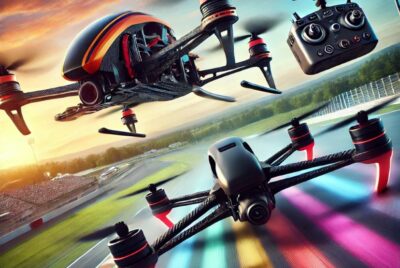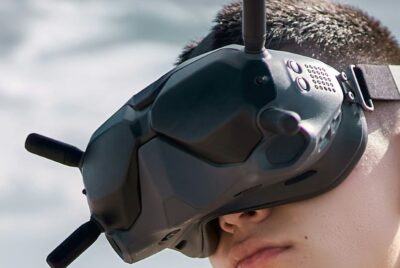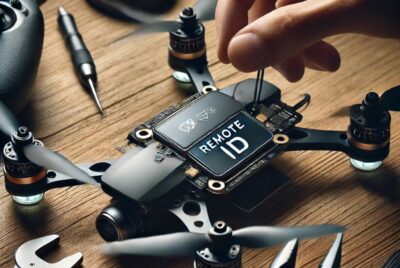FPV Goggles: How to Choose the Right Pair
Hey there! Some links on this page are affiliate links which means that, if you choose to make a purchase, I may earn a small commission at no extra cost to you. I greatly appreciate your support! Please see our Disclosure to learn more.
Introduction
In the world of drone racing, FPV (First-Person View) goggles are an essential piece of equipment. They can make all the difference in your piloting experience. FPV goggles provide an immersive first-person view experience, allowing pilots to see through the drone’s camera as if they were sitting in the cockpit. With so many options available, choosing the right pair of FPV goggles is crucial for comfort, performance, and overall enjoyment of the sport. This guide will help you understand the key features to look for and make an informed decision.
Importance of Choosing the Right FPV Goggles
FPV goggles work by receiving a video signal from the drone’s onboard camera and displaying it on screens in front of the pilot’s eyes. This real-time video feed allows pilots to navigate courses, avoid obstacles, and compete in races with precision and speed.
Selecting the right FPV goggles is crucial for several reasons:
- They directly impact your piloting experience and performance
- The right goggles ensure a clear, comfortable, and immersive view
- Compatible goggles seamlessly integrate with your racing drone setup
Key Features to Consider
When choosing FPV goggles, keep these essential features in mind:
Resolution and Display Quality
One of the most important factors to consider when choosing FPV goggles is the resolution and quality of the displays. Look for goggles with high-resolution displays (e.g., 720p or higher). Higher resolution screens provide clearer, sharper, more detailed images, which can be especially helpful when navigating complex courses or flying in low-light conditions. OLED screens offer excellent color reproduction and contrast.
Field of View (FOV)
The field of view refers to how much of the scene you can see through the goggles. A wider FOV provides a more immersive experience and can make it easier to spot obstacles and navigate turns. However, a wider FOV may also result in a smaller image size, so it’s essential to strike a balance between immersion and screen size based on your preferences.
Latency and Refresh Rate
Latency is the delay between the drone’s camera capturing an image and that image being displayed in the goggles. Lower latency is crucial for responsive flying and quick decision-making. Refresh rate, measured in Hz, determines how smoothly the video feed appears. Higher refresh rates result in a more fluid and seamless experience. Look for goggles with latency under 50ms and refresh rates of at least 60Hz.
Comfort and Fit
Since you’ll be wearing your FPV goggles for extended periods, comfort is key. Look for goggles with adjustable straps, padding, and a balanced weight distribution which can provide a better fit. Some goggles also offer features like fan-assisted ventilation to prevent fogging and keep you cool during long flying sessions.
Interpupillary Distance (IPD) Adjustment
IPD adjustment allows you to change the distance between the screens to match the distance between your pupils. This is crucial for a clear, focused image and to prevent eye strain. Make sure the goggles you choose have a wide enough IPD adjustment range for a comfortable and clear viewing experience.
Receiver Compatibility
Ensure that the FPV goggles you select are compatible with your drone’s video receiver module. Some goggles have built-in receivers, while others require an external module. Consider factors like frequency band, channel count, and whether you prefer analog or digital video transmission. Look for goggles that support popular frequencies and protocols (e.g., 5.8GHz, Fatshark modules).
Additional Features
Consider extras like DVR functionality, HDMI input, diversity receivers, and head tracking, depending on your needs and preferences.
Types of FPV Goggles
There are three main types of FPV goggles:
Box Goggles
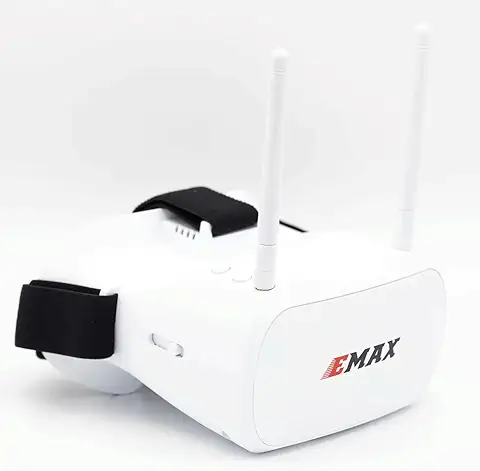
Box goggles are the largest and most traditional style of FPV goggles. They offer ample space for larger screens, electronics, and ventilation fans and often have built-in receivers and batteries. Box goggles are known for their comfort, durability, and ease of use, making them a popular choice among beginners and experienced pilots alike.
Compact Goggles
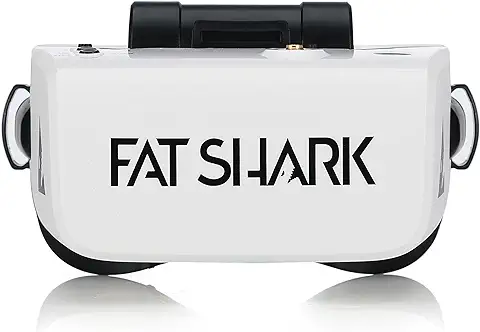
Compact goggles, as the name suggests, have a smaller and lighter form factor than box goggles. They are lightweight, portable, and often feature a sleeker design. While they may not have as much space for larger screens or additional features, they are a great choice for pilots who prioritize a low-profile, streamlined setup. They provide a balance between portability and performance, making them popular among racers.
Slimline Goggles

Slimline goggles are the most lightweight and compact option. They are designed to be worn closer to the face, providing a more immersive experience. Slimline goggles often have a more modern, sleek, low-profile design and are popular among pilots who want the lightest, most compact setup possible.
Additional Features and Considerations
Built-in DVR
Some FPV goggles come with a built-in DVR (Digital Video Recorder), which allows you to record your flights directly to an SD card. This is useful for capturing exciting moments, analyzing your performance, and sharing your experiences with others.
Diversity Receivers
Goggles with diversity receivers use two antennas to receive the video signal from your drone. The receiver automatically switches to the antenna with the strongest signal, minimizing interference and ensuring a more reliable video feed.
Head Tracking
Head tracking allows you to control your drone’s camera or even the drone itself by moving your head. This feature can provide a more intuitive and immersive flying experience, especially for freestyle or cinematography-focused pilots.
HDMI Input
Some FPV goggles feature an HDMI input, which allows you to connect an external video source, such as a camera or video transmitter. This can be useful for spectating races, reviewing recorded footage, or using your goggles with other devices.
Price and Budget
FPV goggles come in a wide range of prices, from budget-friendly options to high-end, feature-packed models. Consider your budget and the features most important to you when making your decision. Remember that while more expensive goggles may offer advanced features, a mid-range option may be more than sufficient for most pilots.
Popular FPV Goggle Options
Here are some well-regarded FPV goggles to consider:
Fatshark Dominator HDO 2

The Fat Shark Dominator HDO 2 is a popular choice among experienced pilots. These high-end goggles offer high-resolution OLED displays, a wide FOV, and a comfortable, adjustable fit. They are known for their excellent build quality and compatibility with a wide range of receivers.
DJI Digital HD FPV Goggles
DJI’s Digital HD FPV Goggles are a high-end option that boasts low-latency, high-resolution digital video transmission for stunning image quality, low latency, and long-range performance. They feature a sleek, modern design and integrate seamlessly with DJI’s digital FPV ecosystem.
Skyzone Sky04X
The Skyzone Sky04X goggles offer a balance of performance and value, with high-resolution displays, a wide FOV, and a built-in diversity receiver. They are known for their comfort, durability, and ease of use, making them a great choice for pilots of all skill levels.
Eachine EV800D
The Eachine EV800D goggles are a budget-friendly option that still offers impressive features, including OLED displays, a built-in diversity receiver, and a DVR. They are a great choice for beginners or pilots looking for a reliable, affordable set of goggles.
Fatshark Scout
The Fatshark Scout goggles are a compact, lightweight option designed for portability and ease of use. They feature a simple, user-friendly interface and are compatible with a wide range of receivers, making them a great choice for pilots who prioritize simplicity and convenience.
Emax Transporter
The Emax Transporter features a detachable screen which can optionally be paired to the E8 Transmitter, allowing pilots to customize their flying experience to suit their needs. Built into the Transporter 2 is a powerful receiver in order to give pilots the cleanest video feed possible while also featuring a built-in DVR, allowing users to record their FPV flights for review, or sharing flight footage with others.
Setting Up and Using FPV Goggles
Connecting to Your Drone
To use your FPV goggles, you’ll need to connect them to your drone’s video transmitter. This typically involves choosing the correct frequency band and channel, ensuring your antennas are properly connected, and powering on both the goggles and the drone.
Adjusting Settings and Preferences
Most FPV goggles offer a range of settings and preferences that you can adjust to suit your needs. These may include brightness, contrast, aspect ratio, and DVR settings. Take the time to familiarize yourself with your goggles’ menu system and experiment with different settings to find what works best for you.
Proper Care and Maintenance
To ensure the longevity and optimal performance of your FPV goggles, it’s essential to take proper care of them.
To keep your FPV goggles in top condition:
- Store them in a protective case when not in use
- Clean the lenses regularly with a microfiber cloth and avoid exposing them to moisture or extreme temperatures
- Update the firmware as needed for optimal performance
- Replace foam inserts and padding as they wear out
Consider investing in lens covers and a cleaning kit to keep your goggles in top condition.
Conclusion
Choosing the right pair of FPV goggles is a crucial step in your drone racing journey and a personal decision that depends on your preferences, budget, and racing style. By considering key features like resolution, FOV, latency, and comfort, you can find a pair of goggles that perfectly suits your needs and preferences. Whether you opt for a high-end, feature-packed model or a simple, budget-friendly option, investing in a quality set of FPV goggles will greatly enhance your flying experience and help you take your skills to the next level.
FAQs
- Can I wear glasses while using FPV goggles?
Yes, most FPV goggles are designed to accommodate glasses. Look for goggles with adjustable focal distance or removable foam inserts that provide extra space for glasses. Some goggles even have built-in diopter adjustments, allowing you to focus the image without wearing glasses. - How do I update the firmware on my FPV goggles?
The process for updating firmware varies depending on the brand and model of your FPV goggles. Generally, you’ll need to download the latest firmware from the manufacturer’s website and follow their specific instructions. This may involve connecting your goggles to a computer via USB and using a dedicated firmware update tool. - What’s the difference between analog and digital FPV goggles?
Analog FPV goggles receive a traditional analog video signal from your drone, which can be prone to interference and static. Digital FPV goggles, like the DJI Digital FPV system, receive a digital video signal that provides better image quality, lower latency, and longer range. However, digital systems are often more expensive and less compatible with older drones. - How can I reduce fogging in my FPV goggles?
To minimize fogging, look for goggles with built-in fan systems or anti-fog coatings on the lenses. You can also purchase third-party anti-fog inserts or apply anti-fog solutions to the lenses before flying. Ensuring proper ventilation and allowing your goggles to warm up before use can also help reduce fogging. - What should I do if my FPV goggles aren’t displaying a clear image?
First, check that your goggles are properly connected to your drone’s video transmitter and that the correct channel and frequency are selected. Ensure the antenna is securely attached and oriented correctly. If the issue persists, try adjusting the focus, brightness, and contrast settings on your goggles. It may also be worth testing with a different video transmitter or antenna to isolate the problem. If the issue remains unresolved, consult your goggles’ manual or reach out to the manufacturer for support.
Final Thoughts:
Choosing the right pair of FPV goggles is a crucial decision that will significantly impact your drone racing experience. Take the time to consider your preferences, budget, and flying style when selecting your goggles. Don’t hesitate to reach out to the drone racing community for advice and insights, as their collective knowledge and experience can be invaluable in helping you make an informed decision. Remember, the perfect pair of FPV goggles should provide a comfortable, immersive, and reliable viewing experience, allowing you to focus on honing your skills and enjoying the thrill of the race. With the right goggles at your side, you’ll be ready to take on any challenge and push your limits in the exciting world of drone racing.







